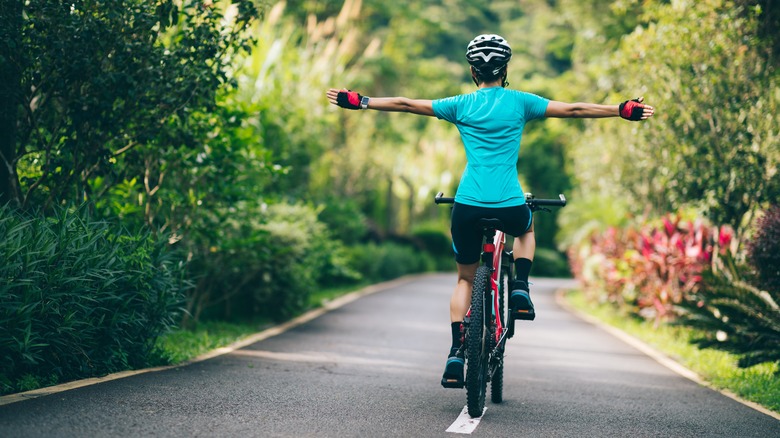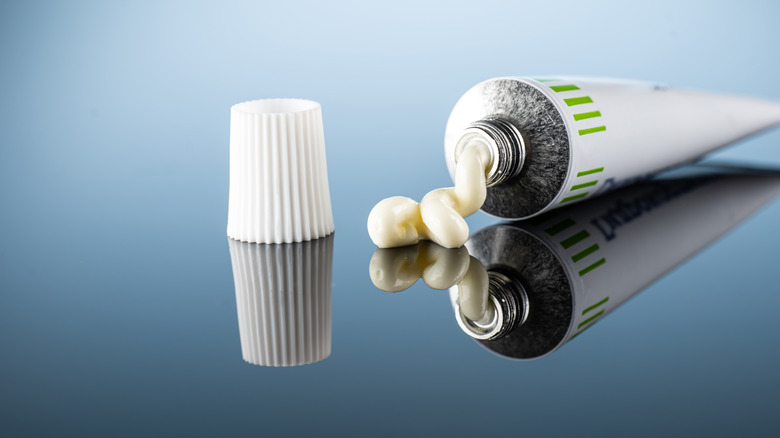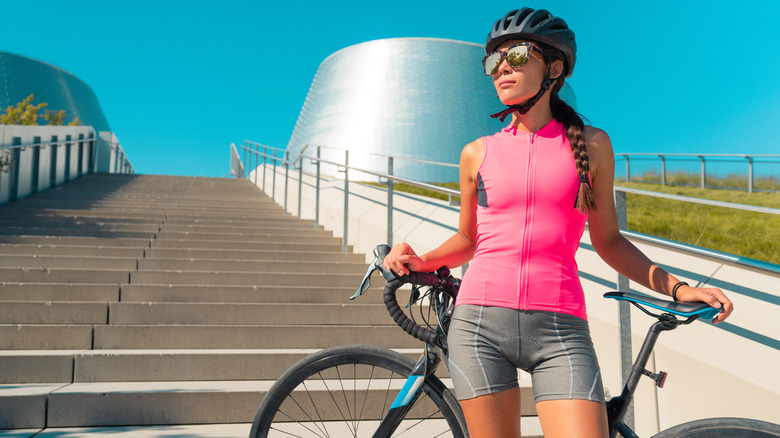What Are Saddle Sores When Cycling (And How You Can Prevent Them)?
Cycling can be the ultimate sunny day activity. Whether you're riding an actual bike outside or a stationary bike at home, cycling has numerous advantages. It can make your heart healthier, boost your immunity, strengthen muscles, and much more. In addition, cycling can positively affect your mental well-being while getting a fantastic low-impact workout. But when you ride a bike every day, one thing that can happen to your body is the formation of saddle sores. This is an umbrella term used to describe painful symptoms caused by cycling.
Orthopedic surgeon Jerome G. Enad, MD, explained this concept to Well+Good, saying, "Saddle sores are irritation of the skin at the buttocks, groin, or thighs from sitting on a bicycle seat." They can also develop around the genitals, and although the term is broad, saddle sores manifest in different injuries ranging from moderate to severe. Healthline reported that this includes chafing, boils, and ingrown hairs. In addition, saddle sores can cause anything from soreness to a rash or a cyst.
Needless to say, experiencing saddle sores, especially in the nether regions, is not fun. But have no fear; you can get rid of and prevent saddle sores before your next cycling outing.
Saddle sores can be treated at home
Saddle sores can be a painful nuisance, but are not long-lasting. Depending on how bad the saddle sore is, you should skip out on cycling for a few days or even a week or more. Luckily, saddle sores can be treated in no time with products you likely already have in your first-aid kit. Jerome G. Enad, MD, told Well+Good that you should keep your saddle sore clean. He added, "A light application of hydrocortisone or antibacterial cream like Neosporin for a few days might help mild or moderate cases (not severe)." If you're in pain, taking ibuprofen can help.
If, for some reason, your saddle sore becomes an abscess that does not go away on its own, it might be time to see a doctor. In an article for Team EF Coaching, Dr. Kevin Sprouse explained that if the sore has pus in it then the saddle sore is infected, and an over-the-counter cream will be useless. In this case, antibiotics are the best treatment option, and if the saddle sore presented is an extreme case, doctors might have to drain it to get rid of the infection. To avoid any of these unpleasantries, experts note that the best thing you can do is take action to prevent saddle sores from forming in the first place.
Here's how to ensure you don't develop saddle sores
Saddle sores develop for various reasons, and are more common in individuals who are overweight. More often than not, friction is the primary cause of saddle sores. As you cycle and continually pedal, your skin is being rubbed, leading to the formation of sores. Moreover, having the wrong bike seat or clothing can also lead to saddle sores. To prevent saddle sores from developing, experts recommend you invest in a proper pair of cycling shorts or pants. To avert friction, you should always wear these without underwear. And if you're on your period, opt for a tampon over a pad for the same reason.
One of the best solutions for chafing is chamois cream. You can apply it anywhere on the body or inside your bike shorts to end chafing. Other tips to prevent saddle sores include finding the right bike seat for you and properly distributing your weight on it. While you cycle, make sure you stop sometime during your ride to get off your bike and move around, which can decrease the chances of getting a saddle sore. In addition, you should consider refraining from shaving your pubic hair to ward off ingrown hairs. Showering after cycling is also very important; it can eliminate bacteria, thus reducing the chances of developing saddle sores.


